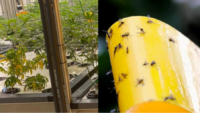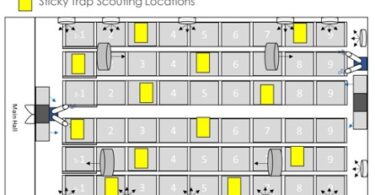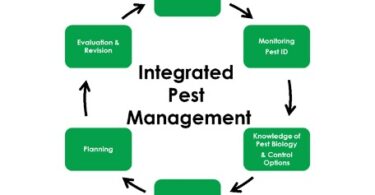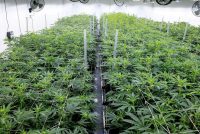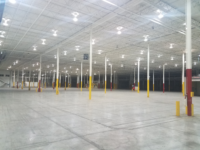Have you heard good things about pruning, but were concerned you might hurt your plants? Overdoing it while pruning is a reasonable concern. However, you should still do it because it can significantly improve your yield. In this article, I’ll provide an in-depth look at how defoliation works, explain why you might want to try it, and preview some of the results you can expect when done correctly.
Improve Your Next Indoor Grow With Defoliation
Defoliation can be a good thing
If you’re not familiar with defoliation, it can seem pretty counterintuitive. However, around the globe, some of the best marijuana growers use this technique to boost their yields, improve the efficiency of their grows, and produce healthier crops.
Here’s why everyone isn’t already doing it:
The practice of defoliation involves both pruning and removing leaves from your cannabis plants. Reasonably, this might seem harmful to the plant. After all, aren’t we trying to encourage it to grow?
So, why would you chop off pieces of a plant you are growing?
Well, the answer is more complicated than you might imagine.
It is true that defoliation “hurts” the plant, but only temporarily. Plus, this stress can actually be beneficial to the plant, encouraging it to thrive and push back against the challenge. Not only that but when done in a careful and controlled manner, defoliation helps a plant more efficiently absorb light and direct its energy and nutrients.
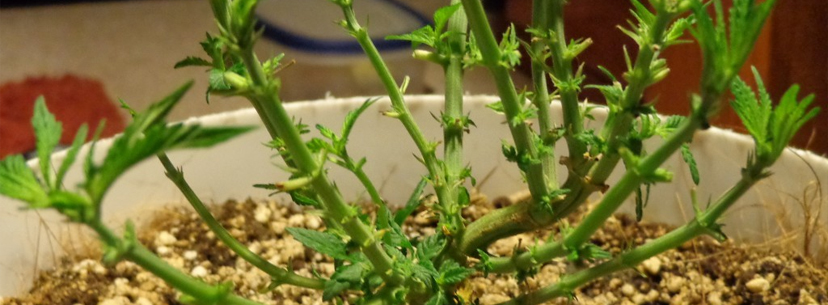
The Science Behind Defoliation
To understand how defoliation can help improve yields, it helps to imagine what the plant is doing with all those leaves.
In the wild, a leaf has a lot of different functions. Not only does it act as a solar panel providing energy through photosynthesis, but it also helps the plant store nutrients. Additionally, leaves act as a shield against pests and inclement weather.
As a plant stretches and grows, it naturally sprouts more leaves. This is part of the innate efficiency of plants. They don’t want to work harder by transporting energy throughout the whole plant. Instead, they use the leaves to deliver their energy and nutrients to nearby areas.
Here’s an example:
Picture a tall, proud, flowering cannabis plant. At the top, you’ll find the biggest and most well-developed buds (they’re in the colas). Near the bottom you might find pockets of small, underdeveloped flowers.
Generally, cannabis flowers grow best when they are exposed to light and air. As such, the best buds are always at the top, and as you go down the plant, the buds get more and more thin, sparse, and poorly developed.
These tiny flowers also have their own set of leaves. But these leaves aren’t there to serve the whole plant — they serve their local area, encouraging these smaller, less desirable flowers to grow.
Here’s the thing, you don’t need those flowers.
In fact, they may be holding back your plant.
Rather than providing the plant energy where you want it most (in the top colas,) these small flowers and their leaves might be sapping energy from the more bountiful part of your harvest!
Enter defoliation and pruning.
What if, rather than having these small leaves going about their business at the bottom of the plant, you simply removed them? And what if, near the top, you remove excessive leaves to help maximize your colas’ exposure to light and air?
The answer to that scenario is a healthier plant and higher yield.
Another cool fact:
Defoliation isn’t just used for cannabis plants. Not only does it work on other plants, according to some scientific studies, but certain crops also thrive significantly when done right. One study demonstrated that controlled defoliation could substantially increase the yield of cowpeas. The defoliation of cotton has also been studied and debated extensively.
Not everyone should practice defoliation

Science is supporting what many marijuana growers already know – defoliation is a beneficial technique.
However, it’s important to point out that this technique is best suited for those with a bit of experience under their belt. This is because you’ll need to provide a lot of care and attention to your plants. You’ll also need to know what to do in case something goes wrong.
Because trust me, something can always go wrong.
Need some help recognizing problematic symptoms in your plants? Check out my Symptom Checker.
Defoliation is also best used when growing indoors. This is because it is much easier to control the environment and provide the necessary support to the plants when they need it.
Why defoliation is often an indoor technique
Growing marijuana indoors makes it easy to control nearly every variable that a grower could face. Here are a few specific reasons why indoor plants are best suited for defoliation:
- Light: Outdoor plants get the benefit of basking in the glory of the sun all day long. The sun is far more powerful and penetrates more than any grow light — and it also moves throughout the sky, shining at different angles down onto your plants throughout the day. Indoors, however, the light shines from the top down. As a result, only the top of the plant really gets full light, whereas the bottom areas may actually be trapped in the shade of the upper portion of the plant. This means that instead of generating energy, those lower leaves may actually just be drawing precious energy away from the upper parts of the plant.
- Space: Space is always a premium when growing indoors. Outdoors, you can let your plants get bushy and spacious, but inside they can quickly become cramped. Defoliation and pruning let you control the shape and size of your plant, helping you optimize your plants’ exposure to light and airflow.
- Airflow: Your plant is constantly respiring — absorbing and expelling carbon dioxide, oxygen, and moisture. Having good airflow is essential to keeping plants healthy. Not only that, a lack of airflow encourages the growth of molds, mildew, and parasites. The problem is, too many leaves can block airflow and impede the plant’s growth. While outdoor plants have the help of the open air and wind to counteract this, indoor growers must create artificial airflow in stuffy environments. A bit of careful defoliation can help ensure your plants will have enough air circulating around them to keep everything healthy and growing well.
Which plants are good candidates for defoliation?

Similar to how every grower shouldn’t practice defoliation, every plant is not always a good fit for the technique either.
You must remember that defoliation is not a strategy used to help ailing plants. Defoliation should strictly be used on strong, healthy plants. Healthy plants with plentiful leaves can benefit from the mild stress caused by gentle defoliation. But if you defoliate a sick plant, you might simply speed up its demise.
A good candidate for defoliation will have:
- Lots of leaves: The plant should be growing strong and have no shortage of leaves. If the leaves are touching each other or overlapping, it’s probably a good candidate for defoliation.
- Hardy genetics: If you’re working with a strain known for being fickle or delicate, it’s probably not a good idea to attempt defoliation. You want a strong, hardy strain that can stand up to some abuse.
- Excess foliage: Some plants simply have too many leaves. You can tell if a plant has too many leaves if the leaves are blocking light and airflow to the lower parts of the plant. If you have a plant where the lower areas are mostly shaded by the upper leaves, it may be a good candidate for defoliation.
Remember, defoliation isn’t for amateurs. Increase your skill by reading my free Grow Bible
How to Time Defoliation for the Best Results

The marijuana plant has three distinct life cycle phases. If you want to try defoliation, you should only do so during the correct times. Here’s how the plant stages relate to defoliation, followed by a detailed guide on how to do it.
- Seedling or Clone Stage: A plant starts out either from seed or as a cutting cloned from an older plant. This is a very delicate time for plants. They should be allowed to grow freely and undisturbed.
- Vegetative Stage: Technically, seedlings and clones are in the vegetative stage, however, when growers refer to the vegetative stage, they mean after the plant has established itself and grown some structure. This is when they are “vegetating” and grow leaves, branches, and nodes. The plants also focus their energy on stretching out vertically and horizontally. This is when you can begin to think about defoliation.
- Flowering: Flowering is the final stage of growth. During this period, the plant slows down on stretching and producing new leaves. It won’t produce new nodes or branches. Instead, the plant will put as much energy as possible into growing flowers! You can also practice defoliation during flowering.
Defoliating during the vegetative stage
The vegetative phase is the best time to practice some defoliation. Your primary target should be fan leaves — the large, broad leaves growing throughout the plant.
Avoid removing the uppermost leaves. If the leaf is getting full exposure to light, let it stay. Focus more on the lower and inner parts of the plant and remove the leaves that don’t receive optimal light.
You can also remove leaves that are too cluttered. When they are dense like this, they block airflow and can sit on top of each other. This creates wet spots and encourages the growth of mildew.
You’ll probably notice that the plant’s older leaves tend to lose their color and turn yellow. These leaves have reached the end of their useful life, and the plant will drop them naturally after they have dried out. You can give the plant a little help by removing these.
Defoliating during the flowering stage
Once the plant is flowering, your goal is to get as much air and light to the buds as possible.
This means you want to remove any large leaves which are blocking air and light from your flowers. While the plant still needs some leaves to produce good flowers, flowering plants aren’t too reliant on their leaves. By the end of the flowering phase, most plants will naturally drop most of their large leaves.
While the main goal during flowering is to expose the buds to air and light, you still want to follow more or less the same guidelines for removing leaves as you did during the vegetative stage. Focus on the middle and lower parts of the plant.
Some growers recommend defoliating shortly before the plants enter the flowering cycle to give the flowers room to take over where the leaves used to be. Other growers prefer to defoliate a few weeks into flowering. But most agree that towards the end of the flowering stage, you should stop or keep defoliating to a minimum. Generally, the plant will have discarded most of its large leaves by the end of flowering anyway.
How Much Defoliation Should You Do?

Every plant is different, so it is impossible to say precisely how much defoliation is the right amount.
It is possible, however, to go overboard with defoliation. If you go too far, the plant might show obvious signs of stress like drooping and slow growth.
As a general rule, remember you can always remove more, but can never remove less. So, take it easy! If you’re unsure of how much you should defoliate, try starting by removing just a few leaves. Then, see how the plant responds over the next few days or weeks.
If the plant responds well to a bit of defoliation, try removing around 15-20% of the leaves and see how it responds.
However, even if the plant doesn’t show any apparent symptoms, removing too many leaves can still slow growth. The only real way to know if you’re stunting the growth is through experience.
If you’re just beginning with defoliation, try experimenting by keeping plants from the same strains in the same conditions and defoliating one while allowing another to grow naturally. Should you notice that the plant you’re defoliating is lagging behind the control plant, it could be an indication that you’re overdoing it with the defoliating.
Pruning versus Defoliation
Another technique frequently lumped in with defoliation is pruning. Pruning refers to removing an entire shoot or branch from the plant, rather than merely removing the leaves themselves.
Pruning does a lot more to control the shape and growth of the plant than simple defoliation.
It can help the plant focus its energy where you want it most.
Although they are technically different, pruning and defoliation accomplish the same goals. However, because you’re removing more of the plant, you should be even more careful about pruning than defoliation.
Generally, you want to prune plants during the early days of vegetative growth — before they’ve wasted too much energy growing a big branch that you’re only going to cut off.
As a general rule of thumb, prune branches that have these characteristics:
- Won’t reach the top: If the branch has little to no chance of growing long or tall enough to get out of the shade of the upper branches, it’s a good candidate for pruning.
- Few nodes: The “nodes” present on a branch are where the buds will grow once the plant begins to flower. If the branch has few nodes, it will likely produce small, sparse, thin buds that are less than optimal. Prune the shoots where nodes are few and far between to free up more energy for the plant to focus on the more node-rich shoots.
Topping Your Plants
Ah, the trifecta of cannabis grooming: defoliation, pruning, and topping.
Topping is a tried and true method for boosting your yield. Like pruning, it requires removing a specific part of the plant. But rather than simply to save energy, topping is done to alter the structure of a plant.
The name “topping” comes from the practice of cutting off the top of the plant — either on the main stem or a branch. On the main stem, this usually takes place at about the fifth node.
Allowed to grow naturally, a cannabis plant tries to race upwards. This is a technique the plant evolved to help it compete for sunlight in the limited spaces, where upwards is always the way to go. However, in our controlled environments where we can limit competition, it’s often beneficial for the plant to grow horizontally rather than vertically.
This is exactly what topping accomplishes. By cutting off the top of a stem, the plant will free up growth hormones that can then be sent to the lateral branches. This stimulates the production of big, healthy colas across the plant.
Topping is a favorite technique of growers both indoors and out. Some even top their plants multiple times to make the effect more pronounced. Combined with defoliation and pruning, topping can help maximize yields and minimize the amount of space required for your crop.
Defoliation Pruning and Your Cannabis’ Yield

For experienced growers, defoliation and pruning can significantly increase your yield. However, your results may vary based on when you do it.
During the vegetative stage, defoliating and pruning can:
- Increase growth speed
- Focus energy to areas of the plant that will produce the most flowers
- Improve exposure to light and airflow
- Help reduce the risk of diseases and parasites
- Make more efficient use of space in your grow area
Once the plant is flowering, you shouldn’t be pruning anymore. But you can continue to defoliate, as it can:
- Improve the flowers’ exposure to light and air
- Free up space for airflow, preventing mold and mildew on the flowers
- Help the plant remove dead, exhausted leaves
If done correctly, defoliation and pruning should boost your yield. However, this can be a big if. Inexperienced growers who prune and defoliate too liberally could harm their plants, so it is essential to be very careful and conscious of what you’re doing.
Be sure to get your seeds before the season starts. Check out my seed bank for the best Marijuana seeds out there!
Defoliation FAQs
Does defoliation help maximize yields in limited spaces?
Yes. Done properly, defoliation encourages the plant to use its energy more efficiently, focusing on the parts most desirable for harvest: the flowers. Not only that, but it can also help you make the most of your limited space by cutting down on the total size of the plant. This can benefit the plant undergoing defoliation as well as its neighbors, improving the airflow and available space of your grow area.
When should you stop defoliation?
Defoliation should usually stop around a few weeks before harvest. Towards the end of the flowering stage, the plant will naturally begin to shed excess leaves to focus energy on the flowers. Too much defoliation during this stage could lead to a plant without enough leaves to properly support itself.
You should also stop defoliation immediately if your plant is showing signs of stress or disease. This can include drooping, slow growth, and discoloration.
Does topping increase yield?
Topping can seriously improve the yield of your plants. Rather than having the plant focus its growth on the cola on its main stem, a properly executed topping allows them to develop a greater number of healthy colas.
The combination of defoliation, pruning, and topping allows expert growers to control the shape and efficiency of their plants, optimizing their use of nutrients, exposure to light, and promoting quality airflow for the entire grow room.
Read Defoliation 101 – How Careful Pruning Can Improve Your Next Indoor Grow on I Love Growing Marijuana.


